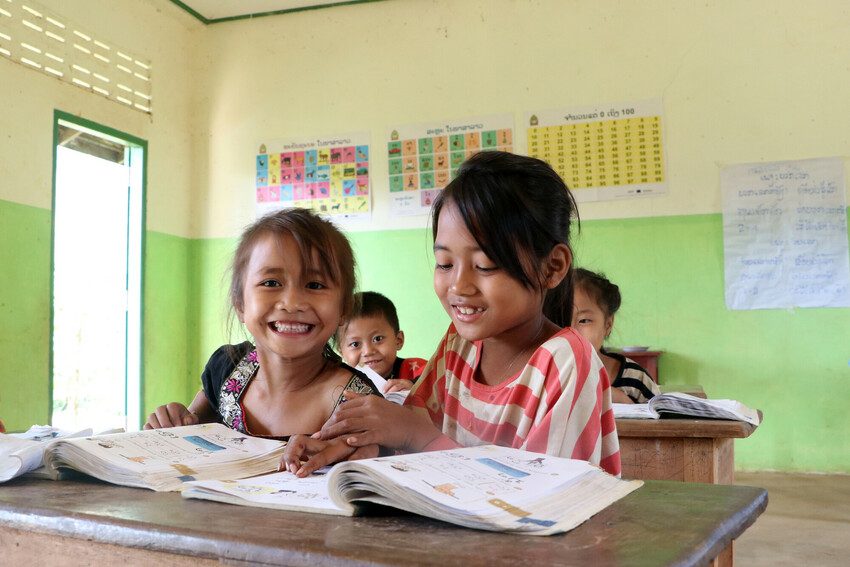girls in crisis
Putting children’s rights, especially those of marginalised girls, at the centre of disaster preparedness and response.
One in every four children in the world is living in a country affected by conflict or disaster; due to a rise in the frequency and intensity of natural disasters and an increase in the duration of conflicts. Girls often face particularly marked violations of their rights. They encounter a range of gender specific barriers, such as accessing and returning to education and face specific protection risks, including sexual and gender-based violence and child, early and forced marriage. Moreover, violence against girls often increases in humanitarian settings which puts girls at greater risk of unintended pregnancy, forced marriages and FGM. Yet even as awareness of the importance of gender sensitive humanitarian response grows, this rarely extends to interventions targeting children. That is why we focus on the needs and rights of children, in particularly marginalised girls, who are among the hardest hit by disaster.
Child protection in emergencies
In emergencies, structures and systems that protect children and support their positive development are often undermined or damaged. Adolescent girls are especially prone to disasters as they begin to assume adult responsibilities and roles without the key skills and networks adults have. Moreover, adolescent girls are often overlooked and excluded from protection responses, which fail to address the unique risks they may encounter.
These issues can have devastating effects on girls’ lives, making them less likely to access life-saving information, such as where to go in the event of a disaster, or how climate change impacts lives. As a result, they are exposed to new threats, such as loss of or separation from their families, sexual exploitation, trafficking, and recruitment into armed groups. Furthermore, existing harmful practices (such as harmful labour and child marriage) can be exacerbated.
We ensure children with urgent protection needs are identified and receive timely, age and gender- appropriate services. In addition, we work with and for adolescent girls who are subject to particular risks during emergencies. We also work to prevent harmful traditional practices, such as child marriage and intimate partner violence, which are often reinvigorated during emergencies.
Education in emergencies

All children should be able to access their fundamental right to education. Children in conflict-affected countries are more than twice as likely to be out of school than children living in countries not affected by conflict. Education in emergency responses should target those disproportionally affected by emergencies, or at greater risk, in particular girls. Research has namely shown that girls face unique barriers to a quality education because they are young and female. These barriers are exacerbated in ongoing crisis or conflict situations, and girls who are out of school face a heightened risk of trafficking, early and forced marriage, early pregnancy, and gender-based violence. Moreover, girls and women are often uniquely targeted by armed groups in these attacks. For example, as victims of sexual violence or in attacks that are specifically aimed at stopping the learning or teaching of girls and women.
This causes that girls are almost two and a half times more likely to be out of school if they live in conflict-affected countries. A particular vulnerable group in this regard are refugee girls. At least one in five refugee or displaced females in complex humanitarian settings have experienced sexual violence, a number that is most likely greatly underestimated, taking the risk of social stigmatisation and danger of reporting such experiences into account. Next to this, it often happens in conflict zones that armed groups recruit or abduct girls and women for forced marriages, domestic work and sexual trafficking which keeps them out of school.
We work to ensure that girls’ specific needs are recognised and addressed in emergencies. This means that Plan International strives to provide quality formal and non-formal education opportunities that meet the needs of girls and boys affected by humanitarian crises. Our work has a particular focus on adolescent girls since they are among the worst affected by disasters. As part of our work we ensure they receive the emotional support they need to recover from their experiences.
Our calls to the EU
- Ensure that the varying needs of girls across the three key age categories (0-5 years, 6-12 years and 13-17 years) are reflected in all responses with a special focus on education, and child participation in emergencies;
- All humanitarian interventions must take a rights-based approach to gender equality, focusing on the poorest and most marginalised girls and women, including refugee girls;
- The EU should ensure clarity of roles and mandates in crisis response and management and maintain a clear distinction between political, military and humanitarian actors;
- The EU should engage in systematic dialogue with NGOs and other actors to fully understand realities on the ground;
- EU external communication should actively promote an understanding of humanitarian principles.
- The EU budget must maintain a steady base budget in order to ensure predictable funding for humanitarian interventions;